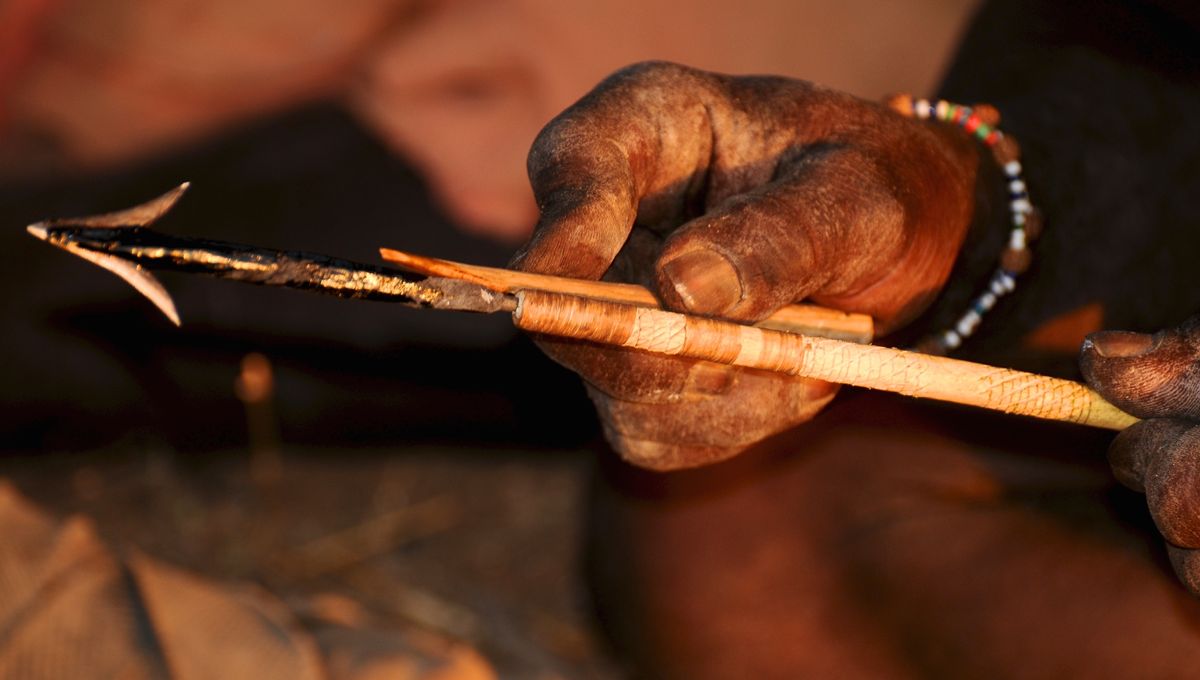
Poison-laced weaponry may have entered the arsenal of European hunter-gatherers more than five millennia ago, say the authors of a new study. If confirmed, this finding would totally upend our understanding of Stone Age hunting, suggesting that complex armaments came into play far earlier than we thought.
At present, the earliest definitive evidence for the use of bows and arrows in Europe comes from a site called Stellmoor, near Hamburg in northern Germany. Dated to between 11,000 and 12,000 years ago, the weapons found here are largely believed to mark the initial transition from throwing spears to archery, thus enhancing the killing power of ancient hunters.
However, as the authors of the new study point out, it’s difficult to draw any firm conclusions about the types of weapons used in the ancient past, since wooden components like bows and shafts have long since decomposed, leaving only stone points. To try and reconstruct the ways in which these projectiles might have been used, the researchers analyzed the ballistic properties of more than 500 Palaeolithic arrowheads from 25 different sites in northern Europe, dated to between 14,700 and 11,700 years ago.
By calculating tip cross-sectional area (TCSA) values for each of these weapons, the authors were able to discern the size of the cut that they were intended to make in the hide of a prey animal. As such, the TCSA reveals whether stone points were most suitable for use on spears, javelins, regular arrows, or poison arrows.
For instance, the researchers explain that “when poison is used, arrow tips are often small and do not require much in terms of penetration depth – all that is needed, is for the hide to be cut so that the poison may enter the prey animal’s bloodstream.”
Initial findings revealed that the oldest arrowheads had TCSA values that were similar to those from Stellmoor, thus suggesting that archery was adopted by European hunters at least 14,700 years ago. This pushes the earliest European use of bows and arrows back by around three millennia.
Other stone points shared their TCSA values with projectiles found in parts of Africa where the use of poison arrows is well established. In other words, the evidence suggests that Europeans may well have been hunting with pharmacologically enhanced weaponry during the Palaeolithic period.
To try and determine how far back the use of poison arrows goes, the study authors also calculated TCSA values for a series of 54,000-year-old stone points from the famous Mandrin Cave in France. Results suggest that around a quarter of these were “ballistically best suited for use as poisoned-arrow tips,” while a further 45 percent were ideal for non-poisoned arrows.
According to these findings, then, European Palaeolithic hunters may have developed both archery and poison weapons tens of thousands of years earlier than previously suggested.
At this stage, the study authors are unable to determine which toxins might have been used during these ancient hunts, although they do provide a list of 58 northern European plants that may have been suitable for poison extraction during the Stone Age.
The study is published in the Journal of Archaeological Science: Reports.
Source Link: Palaeolithic Hunters May Have Used Poison Arrows 54,000 Years Ago